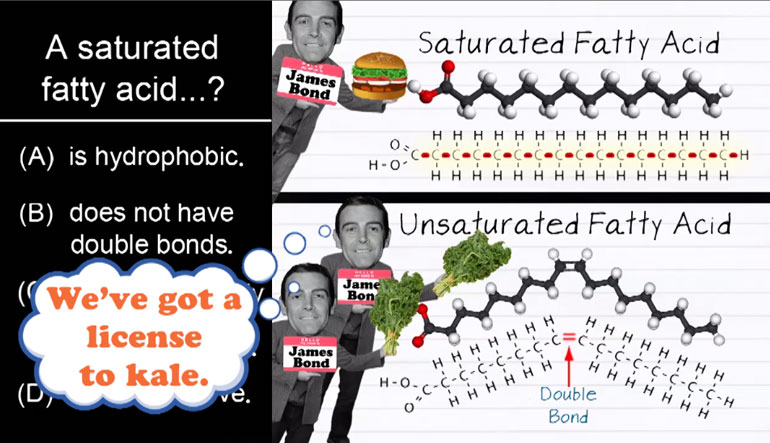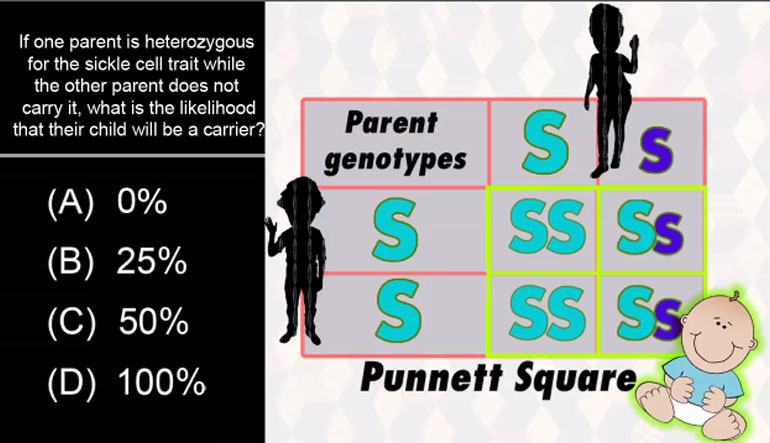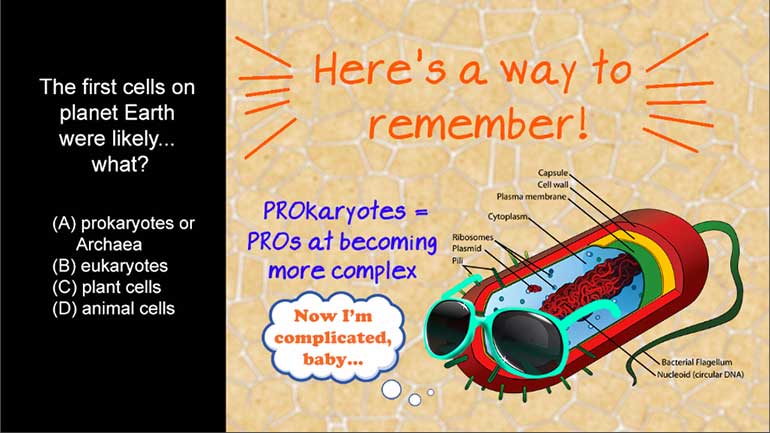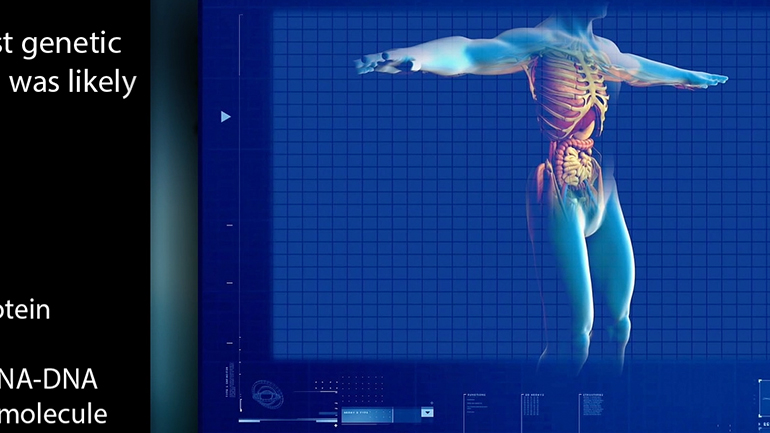ShmoopTube
Where Monty Python meets your 10th grade teacher.
Search Thousands of Shmoop Videos
AP Biology 5.3 Essential Life Process Information 8 Views
Share It!
Description:
AP Biology 5.3 Essential Life Process Information. For what purpose to animals travel in packs, schools, or swarms?
Transcript
- 00:04
Here’s your Shmoop du jour, brought to you by traveling animals.
- 00:07
It’s why those snakes had to get on the plane…. [Samuel L Jackson with a lot of snakes boarding a plane]
- 00:10
Seriously, what was Samuel L. Jackson’s problem…?
- 00:12
They just wanted a nice vacation….
- 00:14
All right, here we go:
Full Transcript
- 00:15
For what purpose do animals travel in packs, schools, or swarms?
- 00:19
And here are the potential answers:
- 00:20
(A) To decrease gene flow (B) To increase the fitness of the individual
- 00:21
and the survival of the population (C) To increase genetic drift
- 00:23
(D) To decrease competition between species
- 00:24
First let's take a look at what happens when animals do hang out together. [Animals hanging out by a pool of water]
- 00:26
Well, animals that cooperate with each other are often more successful.
- 00:30
Take wolves, for example... [Two wolves walking in a forest together]
- 00:32
These two guys hang out together, they eat together, they play Xbox together…
- 00:35
Okay, fine, one of those things isn’t true. [Wolves playing Xbox together]
- 00:37
...They usually eat separately.
- 00:38
Anyway.
- 00:39
They’re part of a pack.
- 00:40
And being part of a pack can get you your next meal, or unlock some cool achievements [Wolves in a pack wearing wolf pack t-shirts]
- 00:44
when you play Call of Duty together.
- 00:46
And you don’t even have to be part of a blood thirsty, Xbox playing pack.
- 00:50
You could prefer hanging out with a school of fish and still end up with some sweet benefits. [A fish swimming with other fishes]
- 00:53
Y’know like...not being eaten.
- 00:55
So hanging out in groups can either help you find more food or avoid being food. [A pack of wolves with a plate of food]
- 01:00
Sounds like a pretty good way to increase your chances of survival.
- 01:03
Now let’s go back to the possible answers, starting with (A), to decrease gene flow.
- 01:08
Gene flow is the transfer of genes from one population to another.
- 01:11
It’s basically what happens when two groups randomly bump into each other and make more [Two birds bump into each other]
- 01:15
babies.
- 01:17
Which is also why we were terrified of bumping into anyone for a solid ten years of our life...and
- 01:22
may still have our protective plastic bubble in the garage... [Man rolling around in a plastic bubble]
- 01:24
So if you hang out in groups, you have a better chance of increasing gene flow, so the answer
- 01:28
can’t be A.
- 01:30
Now for answer B.
- 01:31
We already established that hanging out in groups increases survival, both in real life
- 01:35
and in Call of Duty.
- 01:36
And increased survival means that everyone in that group is ‘fitter’. [Wolves hanging out together]
- 01:41
Except for that one guy who swears by an exercise regime of lifting the remote control once
- 01:45
every two hours. [A wolf using the television remote]
- 01:46
So it looks like B is the correct answer.
- 01:48
But just for fun, let’s take a quick look at answers C & D.
- 01:50
C is all about increasing genetic drift.
- 01:53
We know that genetic drift is the change in frequency of a trait in a population.
- 01:58
Like trying to keep track of how many black sheep are in a flock over 10 years. [Man counting black sheep in a flock]
- 02:02
If only we didn’t keep falling asleep while we were counting them…
- 02:05
But we also know that that’s not what we’re looking for, so we can toss it out.
- 02:09
And we know we can eliminate D, “to decrease competition between species.”
- 02:14
Hanging out in groups has nothing to do with that. [Wolves in a pack eating together]
- 02:16
Seriously, ask our Call of Duty buddies.
- 02:17
No decrease in competition, there...
- 02:19
It all depends on which species are interacting, how large the groups are and so on…
- 02:24
And we can’t forget about resources and population densities and yadayadayayada...so
- 02:28
we can toss out D.
- 02:29
B is definitely our guy.
- 02:31
Now back to counting those sheep. [Man attempts to count black sheep]
- 02:33
This time we’re really going to do it, we’re...we’re….zzzzzzz
- 02:37
(snore)
Up Next
AP Biology: Biological System Interactions Drill 1, Problem 1. Complete the sentence about a saturated fatty acid.
Related Videos
AP Biology: Essential Life Process Information Drill 1, Problem 1. If one parent is heterozygous for the sickle cell trait while the other par...
AP Biology: Evolution Drives the Diversity and Unity of Life Drill 1, Problem 1. The first cells on planet Earth were likely what?
AP Biology: Free Energy and Molecular Building Blocks Drill 1, Problem 1. Which statement incorrectly describes the properties of water?
AP® Biology: Evolution Drives the Diversity and Unity of Life Drill 1, Problem 2. What was likely the first genetic material?




